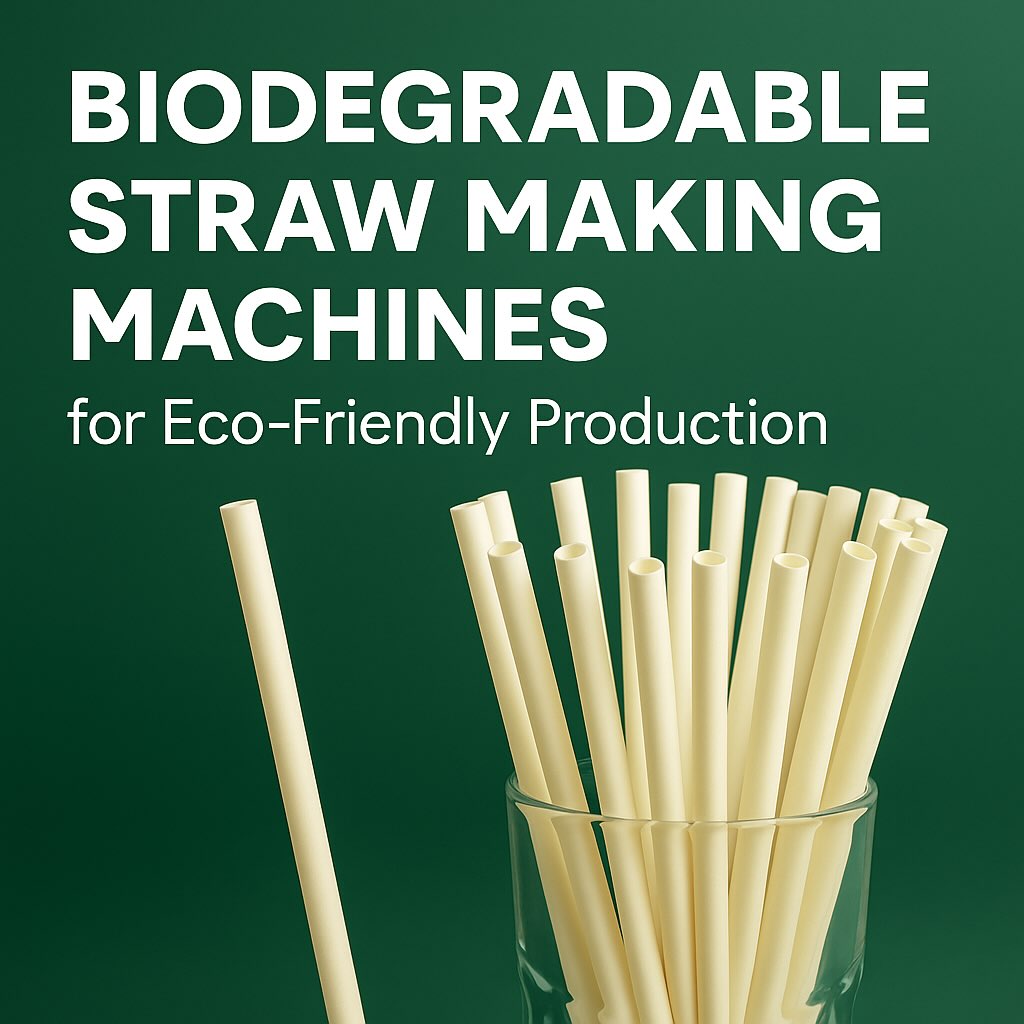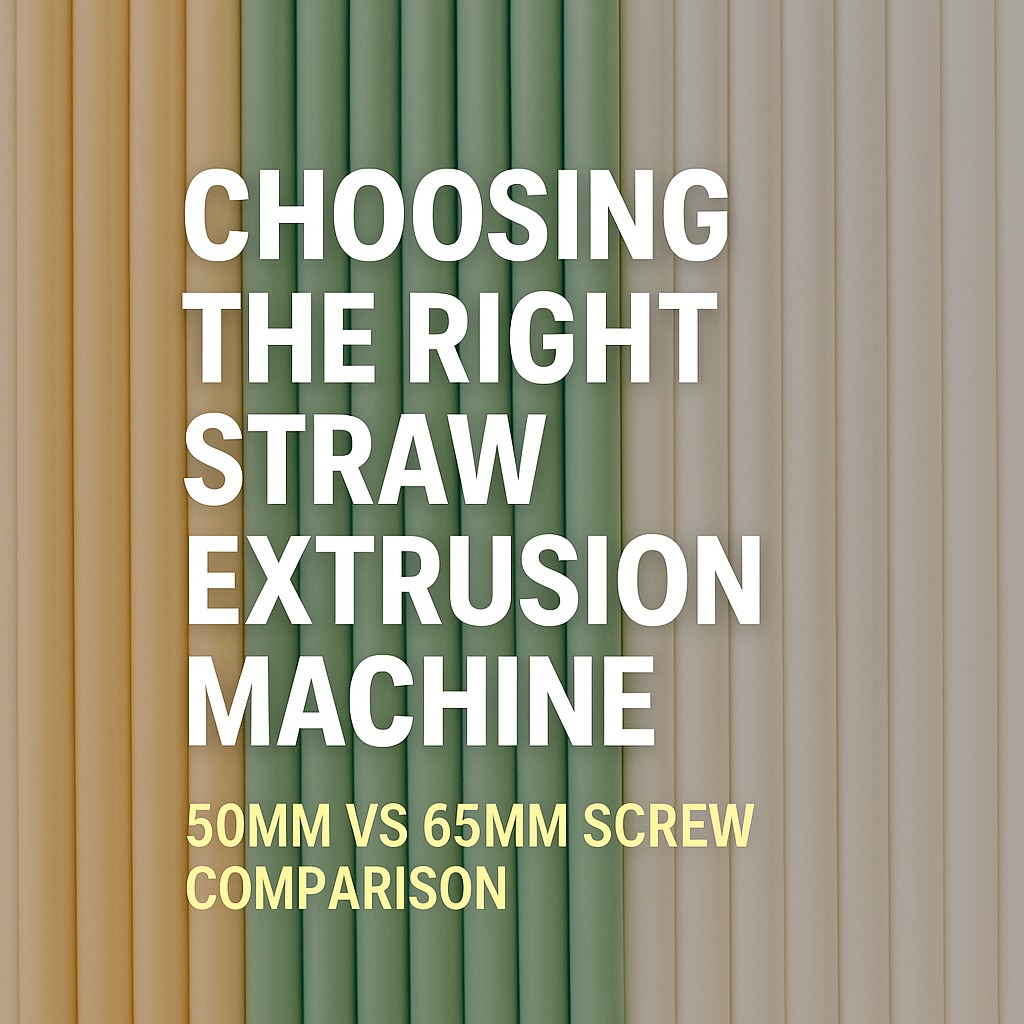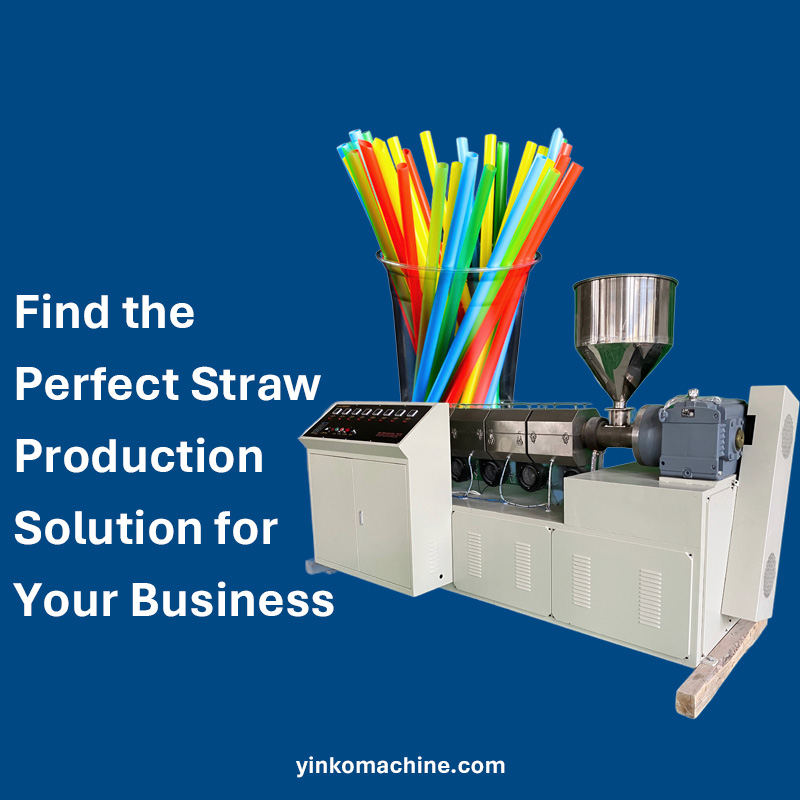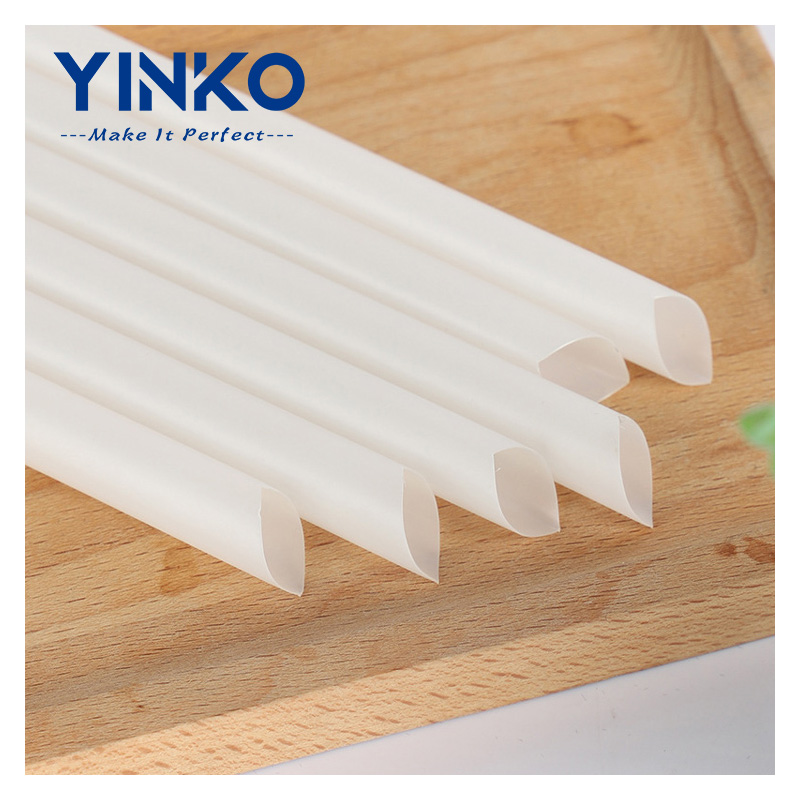 Biodegradable Straw Making Machines for Eco-Friendly Production
Biodegradable Straw Making Machines for Eco-Friendly Production
May 15, 2025
🌿 Introduction: The Shift Toward Sustainable Straws
As more and more people understand that plastic pollution is a problem, governments, brands, and consumers are demanding sustainability. Biodegradable drinking straws made from PLA (polylactic acid), PHA, and PBS have gained considerable traction.
As a result, companies that want to get into or grow their share of the eco-packaging market must invest in the right production equipment. Choosing the right biodegradable straw making machine is no longer just an option. It’s a strategic decision that will impact your product quality, production output, and your ability to compete in the market.
This guide provides you with everything you need to know about biodegradable straw machines and how to choose the right one for your business.
🧪 What Are Biodegradable Straws Made Of?
Biodegradable straws are made from plant-based polymers that will decompose naturally (under industrial composting conditions).
The most common materials include
• PLA (Polylactic acid): Made from either cornstarch or sugarcane. It’s an incredibly popular material because it’s affordable and easy to extrude.
• PHA (Polyhydroxyalkanoates): Fully biodegradable and marine safe. The largest hindrance is that it’s expensive.
The material is extruded into thin tubes through precise heat and pressure control to ensure consistent diameter, strength, and flexibility.
✅ Note: PLA is the most commonly used biodegradable straw material because it provides a good balance of cost, performance, and machine compatibility.
🏭 Machine Types for Biodegradable Straw Production
1. PLA Straw Extrusion Machine
This is the most common setup for producing biodegradable straws.
Typical Components:
Extruder Unit
Cooling Water Tank
Pulling & Cutting Unit
Straw Collector
These machines are compatible with PLA, PP, and similar biodegradable materials.
2. Paper-Based Biodegradable Straw Machine
Uses food-grade paper and glue to wind and cut straws. Ideal for markets focused on paper-based compostable packaging.
🧠 Choose your machine type based on material preference, market trends, and budget.
🔍 Key Considerations When Choosing a Machine
Material Compatibility (PLA, etc.)
Production Output (80–100 kg/hour)
Automation Level (cutting, loading, integration)
Customization Options (diameter, length, shape)
Energy Efficiency (servo motors, heat zone control)
🔧 Featured Model: YK-50PLA Biodegradable Straw Extrusion Line
Screw Diameter: 50mm
Compatible with: PLA, PHA
Speed: Up to 1200 pcs/min
Power: 18–22 kW
Features: Temperature control, auto cutter, water cooling
👉 Request a Free Quote or Demo
🧰 How to Compare Different Machine Offers from Suppliers
Not all machines are created equal, and this is how to evaluate multiple quotes:
- Configuration details: What’s the screw size (50mm, 65mm)? What brand inverter, cutter, etc.?
- Performance vs. power: You want higher output with lower energy usage.
- After-sale support: Will they help you install the machine remotely? Will they custom-make molds for you? Will they provide spare parts support?
- Verification: Get a test video of the machine and a certificate of conformity for each core unit.
📷 How to Request a Machine Trial or Sample
Before you buy, it’s smart to see the machine in action:
Ask for a live demo via video call or a pre-recorded trial of your specific product material (PLA/PBS).
Share key details: daily production target, straw size, packaging preference.
Many suppliers offer free sample straw shipping after trial run—request it!
👉 Ready to test your material? Contact Us
💰 Cost Breakdown: What’s the Total Investment?
Item
Estimated Cost (USD)
PLA Straw Extrusion Line
$13,000–20,000
Auto Loader / Dryer
$500–1,000
Custom Molds
$500–1,000
Straw Packing Machine
$4,000–6,000
Piston Air Compressor
$1500–2,000
📌 Who Should Consider a Biodegradable Straw Machine?
🏢 Plastic product factories
These companies have converted their traditional PP/PE lines over to PLA extrusion, using a similar workflow as before.
📦 Eco packaging exporters
To sell private-label biodegradable products while complying with various regulations in the EU, Canada, and U.S.
🧑‍💻 New startups and sustainable brands
To produce niche compostable and biodegradable products with specific design features and low volume.
🤝 OEM service providers
To provide a full-service straw experience for beverage brands to include straw production, branding and flexible production runs.
✅ Whether you’re a company that’s going to scale or one that is just starting out, there’s a straw machine configuration that will work for you.
🧃 Which Type of Biodegradable Straw and Packaging Fits You Best?
Common Straw Types:
Straight Straws (6–8mm)
U-Shaped Straws (needs bending)
Bubble Tea Straws (10mm+)
Flexible Straws (needs post-extrusion bending)
Packaging Options:
Single wrapping (paper/BOPP)
Bag packing (multi-straw)
Inline bundling for further processing
Printed film for branded packaging
🌍 Eco Trends Driving Biodegradable Straw Demand
📜 Global Regulations
EU SUP Directive (since 2021)
U.S. state-level plastic bans
APAC voluntary phase-outs (Japan, Thailand, South Korea)
🛎️ Brand Commitments
Starbucks, McDonald’s, Costa Coffee moving to compostable straws
Supermarkets prioritizing eco-packaging on shelves
📊 Market Growth
PLA usage in straws growing 15–20% CAGR in regulated markets
ESG-aligned buyers prefer compostable sourcing partners
🔭 The earlier you act, the more market share and brand value you can secure.
📝 Final Checklist: Before You Buy
Define material (PLA, PBS, etc.)
Set output target and automation needs
Ask for certifications and demo videos
Compare configurations and pricing
Work with reliable manufacturer
📣 Ready to Go Green?
Choosing the right biodegradable straw making machine is more than an equipment decision—it's a step toward sustainable growth. If you're looking for expert guidance, tailored configuration, or a free consultation—
👉 Contact us now to get expert advice and your free quote.
اقرأ أكثر

 Choosing the Right Straw Extrusion Machine: 50mm vs 65mm Screw Comparison
Choosing the Right Straw Extrusion Machine: 50mm vs 65mm Screw Comparison
 How to Choose the Right Straw Production Equipment for Your Business
How to Choose the Right Straw Production Equipment for Your Business
 Biodegradable Straw Making Machines for Eco-Friendly Production
Biodegradable Straw Making Machines for Eco-Friendly Production
 كيف تصنع ماصات الشرب؟
كيف تصنع ماصات الشرب؟